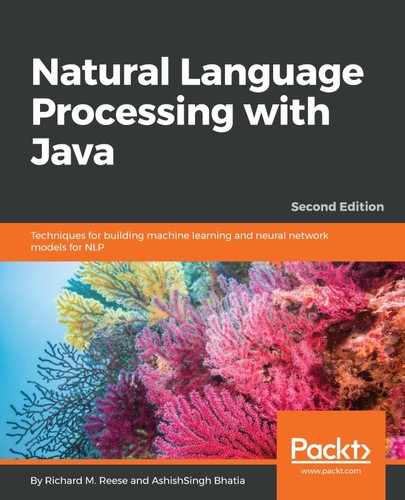The best example of spelling correction is Google. When we search for something with an incorrect spelling, it suggests the correct spelling, as seen in the following screenshot:

The two basic principles used by most algorithms for spelling correction are the following:
- To find the nearest match to the wrongly spelled word. This requires us to have proximity measures for terms.
- If two or more words are correct and tied together, use the one that is the most common. The most common word is calculated based on the count of each term in the documents; the highest is selected.
Two specific forms of spelling correction are isolated term correction and context sensitive correction. Isolated term correction deals with spelling mistakes. Basically, it checks each word for misspellings; it does not consider the context of the sentence. For example, if the word "form" is encountered, in place of word "from" it will treat it as correct, as the spelling is correct. Context sensitive correction will look at the surrounding words and can suggest required corrections, so it can suggest "form" instead of "forms." If the given sentence is "We took flight form point A to point B", in this sentence, the word "form" is wrong but the spelling is correct, so isolated term correction will treat it as correct, whereas context sensitive correction will suggest "from" instead of "form."
